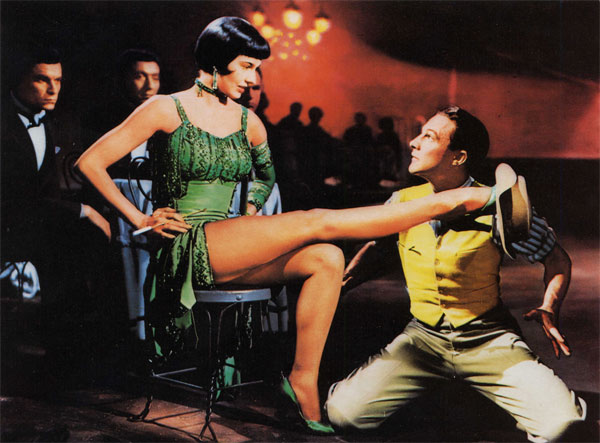SINGIN’ IN HOLLYWOOD: MEET STANLEY DONEN

Stanley Donen is one of the great classical directors of American cinema. Stanley Donen is one of the great modern directors of American cinema. Think about it, it’s not something we could say about a lot of people. Born in 1924 in South Carolina, at the age of fifteen he was already in Broadway, admiring Fred Astaire. He was a chorus line dancer and assistant choreographer; Gene Kelly noticed him and wanted him by his side in Hollywood. It was the golden age of what history would call classical cinema, but at the time it was a period of invention, explosion and energy. Donen put together the choreography of Anchors Aweigh – the charming extravagance where Gene Kelly dances with a cartoon mouse. His big opportunity came with On the Town, once again sailors and girls but this time at large in a New York that had not yet been caught live by a musical. Realism? Please. Avant-garde, pure abstraction: white silhouettes against a blue sky and the steel outlines of skyscrapers. And with Kelly, a partnership that would extend to two other films, wrestling between triumph and torment: “Co-direct a film? Substitute co-direction with the word battle and you will know what it means. Co-directing is a nightmare. Doing something together is a nightmare”: but clashing and singing and splashing in the rain the two would make the genre’s spectacular sensation (and Moses Supposes, added Donen, was “the best tap number that has ever been done in pictures”). Up until the fifties, Donen’s musicals were birds of paradise: whether forming a delicate, shimmering shape around the figure of Audrey Hepburn (Funny Face), taking on the boisterous roughness of the working class (The Pajama Game) or becoming a phantasmagorical country mithology (Seven Brides for Seven Brothers).
And yet for Donen the best was still to come. In the sixties, while the studios were collapsing, he obtained new freedom. He directed two sophisticated comedies, Charade and Arabesque, in the form of a vivacious pastiche. Tavernier and Coursodon wrote that “with their extravagant shots, the close ups of objects, superimpositions and artificial colours, they are similar to comics, fashion photography and contemporary avant-garde” (all true, but Charade happens to be a wonderful film and Arabesque doesn’t – and it was not just the fault of Sophia Loren). But it was with Two for the Road that Donen made his most personal masterpiece. He had already made two other battle-of-the sexes comedies for mature lovers of enduring interest, Indiscreet and The Grass is Greener, but they were what we could call high routine. Instead, Two for the Road is an extraordinary work on time, marriage and love. The “classical” circularity of On the Town, life in one day between sunrise and saying goodbye, is juxtaposed with the fragmented, existential and undecidable time of Two for the Road. “Godard said that film was truth at twenty-four frames per second. I think it’s a lie at twenty-four frames per second”. Thank you Mr. Donen for every single one of your lies.
Section curated by Guy Borlée e Peter von Bagh
Notes by Paola Cristalli


